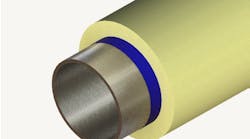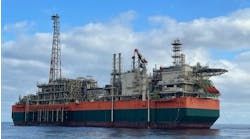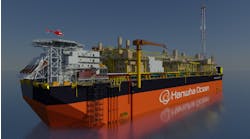Offshore staff
HOUSTON – With permission from the Deepwater Horizon Incident Command, BP has completed pumping cement into the Macondo well through the containment cap and is holding pressure on the cement pending a final pressure test scheduled sometime today.
“Let me state, and I have stated this several times, that this is not the end,” said Admiral Thad Allen, national incident commander. “But it will virtually assure us that there will be no chance of oil leaking into the environment. We will then proceed to finish the relief well. The relief well is currently four-and-a-half ft away from the Macondo well, and about 100 to 110 ft above the point where they would enter the annulus.”
In an earlier statement, Kent Wells, BP senior vice president, talked about how the static kill was accomplished:
“The injection test (that preceded cementing) was very helpful. It gave us a lot of confidence going into the static kill. We were confident we could pump into the reservoir at very little pressure above what the shut-in pressure was, and that was good.
“So we did pump the static kill … at five barrels per minute. We were able to watch as we pumped the mud in. We were able to watch the pressure continuously and gradually decline. We were able to watch as the base oil and then the mud actually hit the reservoir. We were able to see it pressure up, and then we were able to see that pressure come back down.
“And these were all very encouraging signs. And then what we kept doing is we kept injecting it as five bbl/min, injecting more of the oil that was in the casing and actually mud, and continued to inject it into the reservoir for a period of time to make sure we'd cleaned all of the oil we could out of the casing.
“And so we pumped for a number of hours. And then as we got confident that we'd actually got the well into a static condition, we actually increased the rate up to 10 bbl/min, and then ultimately 15 bbl/min, and we did that to give ourselves confidence that, if we chose to go ahead with the cementing procedure, we could actually pump at higher rates, because that will give us a more effective cement job.
“So we spent some extra time yesterday pumping more fluid in, just to give ourselves more information and confidence. So by the end of the whole process, we had injected about 2,300 barrels of mud, and a lot of that was actually designed at just cleaning out the casing and making sure that we could move forward with the cement job with confidence, if we choose to do so.”
08/06/2010


